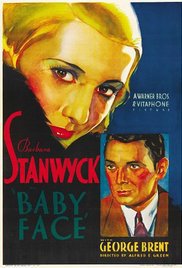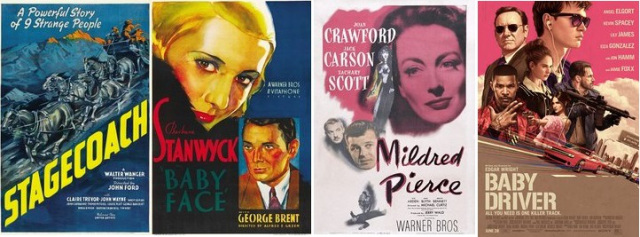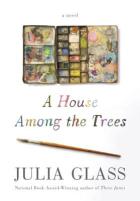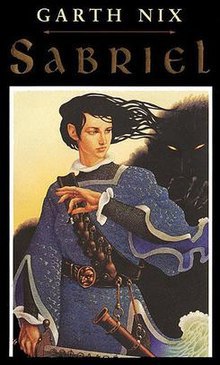 The recent film Baby Driver forced me to spend an unhealthy and inordinate amount of time contemplating film narrative development. My upcoming review of that film will go into more specifics in terms of how that film’s narrative is “driven” from a most unsuspecting source. In broader terms though, Baby Driver got me thinking about what at its core drives film narrative, and the answer I arrived at is one word: choice. Well choice, or the absence of it. Historically, there has actually been some debate about what the basis for Hollywood storytelling and narrative style is; however, in order to really arrive at any conclusions, we need to go back to the early days of film. There are actually two film theorists, Robert Ray and Jeanine Basinger, who hold two popular yet different views on the topic. Robert Ray says in his book A Certain Tendency of the American Cinema 1930-1980, that classic Hollywood narratives revolve around the ideology of “the denial of the necessity of choice,” and this ideology can be utilized both in story as well as in film style/technique. What he means by this is that the narrative is propelled forward due to the appearance of a lack of choice for the protagonist and/or the filmmaker. Jeanine Basinger, in her book A Woman’s View, on the other hand believes that choice, especially in the case of the movie female, is key to the storytelling and workings of classic Hollywood cinema. Each of their views can be analyzed separately. For example, Ray’s view can be seen quite clearly in John Ford’s 1939 film Stagecoach while Basinger’s view is well illustrated in Alfred E. Green’s 1933 film Baby Face.
The recent film Baby Driver forced me to spend an unhealthy and inordinate amount of time contemplating film narrative development. My upcoming review of that film will go into more specifics in terms of how that film’s narrative is “driven” from a most unsuspecting source. In broader terms though, Baby Driver got me thinking about what at its core drives film narrative, and the answer I arrived at is one word: choice. Well choice, or the absence of it. Historically, there has actually been some debate about what the basis for Hollywood storytelling and narrative style is; however, in order to really arrive at any conclusions, we need to go back to the early days of film. There are actually two film theorists, Robert Ray and Jeanine Basinger, who hold two popular yet different views on the topic. Robert Ray says in his book A Certain Tendency of the American Cinema 1930-1980, that classic Hollywood narratives revolve around the ideology of “the denial of the necessity of choice,” and this ideology can be utilized both in story as well as in film style/technique. What he means by this is that the narrative is propelled forward due to the appearance of a lack of choice for the protagonist and/or the filmmaker. Jeanine Basinger, in her book A Woman’s View, on the other hand believes that choice, especially in the case of the movie female, is key to the storytelling and workings of classic Hollywood cinema. Each of their views can be analyzed separately. For example, Ray’s view can be seen quite clearly in John Ford’s 1939 film Stagecoach while Basinger’s view is well illustrated in Alfred E. Green’s 1933 film Baby Face.
 In his book, Robert Ray uses the western genre as the best way to document the “denial of the necessity for choice. He focuses on the western male individual and his “ad hoc solutions for problems depicted as crisis.” Thus, Ray seems to believe the western hero, a man who is in complete control (or appears to be) of the world around him, is the ultimate example for his theory on how to drive a movie narrative. Ringo (John Wayne) in John Ford’s Stagecoach is a character that strongly illustrates Ray’s theory. Ringo is the perfect example for Ray’s statement that “the denial of the necessity for choice…discourag[es] commitment to any single set of values.” Ringo has no solid set of values and the audience is well aware of this. As the film progresses, the audience realizes Ringo is unique in the sense that they know the drunk is a drunk and the prostitute is a prostitute but they know very little, if anything at all, about Ringo. Thus, he is the ultimate individual who can form his own values and not be labeled or expected to act in any particular way. This frightens most of the characters in the film at first, but Ford demonstrates that Ringo’s qualities are reputable and add to his control of the narrative. One scene that shows this is the famous dinner scene. In this scene, everyone stops to eat at a dinner cabin and no one wants to sit near the prostitute, but Ringo thinks that everyone leaves the table because they do not want to sit by him. Here the audience sees Ringo as completely nonjudgmental and honorable. Much of this also rings true to the character of Baby (Ansel Elgort) in Baby Driver. He remains a mystery to most of the other characters in his “stagecoach,” yet his stoic silence and individuality propel the film. Watch the scene where Baby jams to his tunes while Doc (Kevin Spacey) lays out the plans for the next robbery, and tell me there are no similarities to the dinner scene in Stagecoach!
In his book, Robert Ray uses the western genre as the best way to document the “denial of the necessity for choice. He focuses on the western male individual and his “ad hoc solutions for problems depicted as crisis.” Thus, Ray seems to believe the western hero, a man who is in complete control (or appears to be) of the world around him, is the ultimate example for his theory on how to drive a movie narrative. Ringo (John Wayne) in John Ford’s Stagecoach is a character that strongly illustrates Ray’s theory. Ringo is the perfect example for Ray’s statement that “the denial of the necessity for choice…discourag[es] commitment to any single set of values.” Ringo has no solid set of values and the audience is well aware of this. As the film progresses, the audience realizes Ringo is unique in the sense that they know the drunk is a drunk and the prostitute is a prostitute but they know very little, if anything at all, about Ringo. Thus, he is the ultimate individual who can form his own values and not be labeled or expected to act in any particular way. This frightens most of the characters in the film at first, but Ford demonstrates that Ringo’s qualities are reputable and add to his control of the narrative. One scene that shows this is the famous dinner scene. In this scene, everyone stops to eat at a dinner cabin and no one wants to sit near the prostitute, but Ringo thinks that everyone leaves the table because they do not want to sit by him. Here the audience sees Ringo as completely nonjudgmental and honorable. Much of this also rings true to the character of Baby (Ansel Elgort) in Baby Driver. He remains a mystery to most of the other characters in his “stagecoach,” yet his stoic silence and individuality propel the film. Watch the scene where Baby jams to his tunes while Doc (Kevin Spacey) lays out the plans for the next robbery, and tell me there are no similarities to the dinner scene in Stagecoach!
This also brings up Ray’s statement about the “law” versus the “heart.” He says, “This sense of the law’s inadequacy to needs detectable only by the heart generated a rich tradition of legends celebrating legal defiance in the name of some ‘natural’ standard.” In Stagecoach, Ringo shows that he defies the law for a moralistic reason, avenging his brother’s death, both when he went to prison as well as with the gunfight at the film’s finale (both instances also echoed in Baby Driver). Ford also uses stylistic technique to show Ringo’s control over his environment. In the scene where Ringo is first introduced, he climbs into the stagecoach with all the other passengers. Here, Ford positions Ringo in a way so that every time the camera goes to him he dominates his own frame. All the shots of the other passengers share the frame with other people, but Ringo is always shown as alone. This preserves his individual characteristics as well as to allow the audience to identify with him and trust in him. Furthermore, Ford also allows Ringo to wander freely in and out of frame throughout the film. Several scenes show Ringo with this freedom of movement. This represents the fact that Ringo is in control of his environment. Therefore, Ringo is a strong example of how the western hero can demonstrate the “denial of the necessity for choice” forcing audience identification and, thus, drives the film’s narrative.
 The 1933 film Baby Face is a film that fits nicely into Jeanine Basinger’s theory about women in film. The crux of that theory is that films on one hand show women with a passion for success where there are unending opportunities and outlooks for them. However, on the other hand by the end of the film this power of opportunity and choice they once had is somehow deeply undercut and forced in one direction which usually adheres to the current cultural status of women. Baby Face demonstrates this quite flawlessly. One scene that brilliantly illustrates Basinger’s ideology is towards the end of the film. In this scene, Lily (Barbara Stanwyck) has received Trenholm’s (George Brent) fortune. This money represents all that she has passionately and ruthlessly worked for since she joined the workforce. However, when Trenhom’s bank is bankrupt, Lily is faced with the choice to either help her husband whom she may love or leave with the money. She eventually chooses love but at the cost of her husband shooting himself before she makes up her mind. This alone strongly depicts Basinger’s theory that the woman full of passion is forced to make a choice, usually involving love. However, Basinger is truly correct when the audience learns that Lily and the recovered Trenholm move to the factory town to start a new life together. Here the film shows that Lily’s choice that she was forced to make deeply undercuts the passion she had earlier and she is forced to conform to a more socially accepted role for women of her time. Thus, supporting Basinger’s statement that many films show women doing amazing things, however, in the big picture, the life of the average culturally accepted housewife is the best way to end up. Watch the evolution of Debra (Lily James) in Baby Driver compared to that of Darling (Eiza Gonzalez). How does the narrative treat them? What choices were made? Where do they end up and how does that reflect the current cultural status of women? Also, I would be remiss to not mention the similarity in title: Baby Face, Baby Driver.
The 1933 film Baby Face is a film that fits nicely into Jeanine Basinger’s theory about women in film. The crux of that theory is that films on one hand show women with a passion for success where there are unending opportunities and outlooks for them. However, on the other hand by the end of the film this power of opportunity and choice they once had is somehow deeply undercut and forced in one direction which usually adheres to the current cultural status of women. Baby Face demonstrates this quite flawlessly. One scene that brilliantly illustrates Basinger’s ideology is towards the end of the film. In this scene, Lily (Barbara Stanwyck) has received Trenholm’s (George Brent) fortune. This money represents all that she has passionately and ruthlessly worked for since she joined the workforce. However, when Trenhom’s bank is bankrupt, Lily is faced with the choice to either help her husband whom she may love or leave with the money. She eventually chooses love but at the cost of her husband shooting himself before she makes up her mind. This alone strongly depicts Basinger’s theory that the woman full of passion is forced to make a choice, usually involving love. However, Basinger is truly correct when the audience learns that Lily and the recovered Trenholm move to the factory town to start a new life together. Here the film shows that Lily’s choice that she was forced to make deeply undercuts the passion she had earlier and she is forced to conform to a more socially accepted role for women of her time. Thus, supporting Basinger’s statement that many films show women doing amazing things, however, in the big picture, the life of the average culturally accepted housewife is the best way to end up. Watch the evolution of Debra (Lily James) in Baby Driver compared to that of Darling (Eiza Gonzalez). How does the narrative treat them? What choices were made? Where do they end up and how does that reflect the current cultural status of women? Also, I would be remiss to not mention the similarity in title: Baby Face, Baby Driver.
 Although Ray and Basinger’s views are contrasting in some respects, I propose that the two theories can be reconciled. An excellent example of this reconciliation can be found in an analysis of Michael Curtiz’s 1945 film Mildred Pierce. Although Ray and Basinger’s theories for the basis of classic Hollywood narrative success differs on many fronts, Michael Curtiz’s 1945 film Mildred Pierce seems to correlate both theorists ideas into a very cohesive classic Hollywood narrative structure. It is at this reconciliation, that I believe we stand today in terms of what is driving our modern Hollywood narratives as well – Baby Driver being a strong example. As Ray states, films of the classic Hollywood era were quite careful to try to draw as little attention as possible to the actual production of the picture itself. That is to say, trying to make the audience forget that they are watching a movie or that choices are made for every step of the film’s progression. However, as time passed many films began to deviate from this normal classic Hollywood style and create new genres of film style and mythology. This transition away from the classic Hollywood style and storytelling did not occur over night and, thus, it is these transition films of the late 30’s and early 40’s that illustrate a clash of Ray and Basinger’s arguments. Although they are still classified to be of the classical Hollywood style and narrative structure, these films also began to include new styles, choices, and techniques which, in the case of Mildred Pierce, were strongly focused towards the movie female.
Although Ray and Basinger’s views are contrasting in some respects, I propose that the two theories can be reconciled. An excellent example of this reconciliation can be found in an analysis of Michael Curtiz’s 1945 film Mildred Pierce. Although Ray and Basinger’s theories for the basis of classic Hollywood narrative success differs on many fronts, Michael Curtiz’s 1945 film Mildred Pierce seems to correlate both theorists ideas into a very cohesive classic Hollywood narrative structure. It is at this reconciliation, that I believe we stand today in terms of what is driving our modern Hollywood narratives as well – Baby Driver being a strong example. As Ray states, films of the classic Hollywood era were quite careful to try to draw as little attention as possible to the actual production of the picture itself. That is to say, trying to make the audience forget that they are watching a movie or that choices are made for every step of the film’s progression. However, as time passed many films began to deviate from this normal classic Hollywood style and create new genres of film style and mythology. This transition away from the classic Hollywood style and storytelling did not occur over night and, thus, it is these transition films of the late 30’s and early 40’s that illustrate a clash of Ray and Basinger’s arguments. Although they are still classified to be of the classical Hollywood style and narrative structure, these films also began to include new styles, choices, and techniques which, in the case of Mildred Pierce, were strongly focused towards the movie female.
 It is clear that Mildred Pierce demonstrates many of the characteristics Ray would say are commonly found in the classic Hollywood formula narrative. For example, in the scene near the beginning where Mildred (Joan Crawford) is summoned to speak with Inspector Peterson (Moroni Olsen), Curtiz uses classic Hollywood style to show Peterson’s control and authority over the situation. In this scene Peterson is positive that he has found the murderer and he explains the mechanics of how his detective work has succeeded. In the first shot of the scene, the camera is positioned behind Peterson’s desk. This shot allows Peterson to tower over Mildred as he stands up to greet her. After he sits down, Curtiz cuts to a close shot of Peterson so that he dominates the frame as he begins to explain his case. The camera then cuts to a longer shot of Mildred and then back to the same closer shot of Peterson. This technique of cutting back and forth during a conversation while emphasizing one individual’s contribution more than the other’s echoes Ray’s theory of how there is very little choice involved here. Like Ford, Curtiz too shows one character as completely dominant. This method forces the audience to identify more with Peterson than with Mildred without drawing their attention to any camera movements. This scene also uses other classic Hollywood techniques to show that Peterson is in control of this conversation. Later in the scene Mildred wants to know who Peterson believes the murderer to be. Peterson stands up and again the camera is positioned behind him allowing him to tower over Mildred. After he tells Mildred that she is entitled to know who killed her husband, there is an eyeline match between Peterson and the buzzer on his desk, which alerts one of his officers to bring in the suspect. Peterson is very much in control of his diegnesis here; all he has to do is push a button to make something happen. This use of an eyeline match to reinforce Peterson’s control over the conversation helps suture the viewer into the film, and is also a common characteristic of the classic Hollywood cinematic style. Before the scene ends, there is another shot that adds to Peterson’s control of the scene. After Mildred’s first husband is brought in as the suspect, the camera cuts to another shot of Peterson. In this shot, the camera is pointing slightly upwards at him to give him an aura of superiority as he confirms his position by saying calmly, “Yes, he did it, your first husband, Pierce.” This technique again enhances the viewer’s trust and assurance in Peterson without drawing attention to the filmmaking process. Thus, this scene is a very strong example of Ray’s theory that the classic Hollywood narrative is driven by an appearance of a lack of choice by the filmmaker as well as for the audience.
It is clear that Mildred Pierce demonstrates many of the characteristics Ray would say are commonly found in the classic Hollywood formula narrative. For example, in the scene near the beginning where Mildred (Joan Crawford) is summoned to speak with Inspector Peterson (Moroni Olsen), Curtiz uses classic Hollywood style to show Peterson’s control and authority over the situation. In this scene Peterson is positive that he has found the murderer and he explains the mechanics of how his detective work has succeeded. In the first shot of the scene, the camera is positioned behind Peterson’s desk. This shot allows Peterson to tower over Mildred as he stands up to greet her. After he sits down, Curtiz cuts to a close shot of Peterson so that he dominates the frame as he begins to explain his case. The camera then cuts to a longer shot of Mildred and then back to the same closer shot of Peterson. This technique of cutting back and forth during a conversation while emphasizing one individual’s contribution more than the other’s echoes Ray’s theory of how there is very little choice involved here. Like Ford, Curtiz too shows one character as completely dominant. This method forces the audience to identify more with Peterson than with Mildred without drawing their attention to any camera movements. This scene also uses other classic Hollywood techniques to show that Peterson is in control of this conversation. Later in the scene Mildred wants to know who Peterson believes the murderer to be. Peterson stands up and again the camera is positioned behind him allowing him to tower over Mildred. After he tells Mildred that she is entitled to know who killed her husband, there is an eyeline match between Peterson and the buzzer on his desk, which alerts one of his officers to bring in the suspect. Peterson is very much in control of his diegnesis here; all he has to do is push a button to make something happen. This use of an eyeline match to reinforce Peterson’s control over the conversation helps suture the viewer into the film, and is also a common characteristic of the classic Hollywood cinematic style. Before the scene ends, there is another shot that adds to Peterson’s control of the scene. After Mildred’s first husband is brought in as the suspect, the camera cuts to another shot of Peterson. In this shot, the camera is pointing slightly upwards at him to give him an aura of superiority as he confirms his position by saying calmly, “Yes, he did it, your first husband, Pierce.” This technique again enhances the viewer’s trust and assurance in Peterson without drawing attention to the filmmaking process. Thus, this scene is a very strong example of Ray’s theory that the classic Hollywood narrative is driven by an appearance of a lack of choice by the filmmaker as well as for the audience.
Basinger’s voice can be heard in another sequence of the same film. Mildred Pierce is one of the films of the late 30’s and 40’s that experiments with adding a distinct and noticeable style to the film and, thus, beginning to deviate from the transparent classic Hollywood style of filmmaking. It seems that it is these stylistic sequences that hold strongly to Basinger’s theory of the movie female in classic Hollywood narratives. A scene that demonstrates a deviation from classic Hollywood style is the final scene of the film. Here Curtiz uses bright imagery contrasted with dark imagery in the same scene. After Mildred’s daughter Veda (Ann Blyth) has been discovered as the murderer, Mildred exits the police station. As she exits, her first husband, Bert (Bruce Bennett) is waiting for her. As they leave the police station they walk out from the shadows and out through a bright sunlit arch. This obvious contrast of darkness to brightness stylistically implies a positive future for the couple. Here Basinger shines through as Curtiz creates an establishment or reestablishment of a man/woman couple. He does this with rather expressionistic style as well as constructing his narrative so that the woman has made a very hard choice; Mildred realizes she had always neglected her husband for her daughter and, thus she chooses to start over. This scene comes quite soon after the audience learns that Mildred lost her restaurant to Wally (Jack Carson). This connection strongly supports Basinger’s statement that while movies say women should be both woman and wife, these same films show, (as in Baby Face) these “woman” options fail leaving the woman left to become the wife.
 Robert Ray and Jeanine Basinger have two very strong arguments about what drives a film narrative. Ray has strong evidence to support his view that a film that guides the audience thematically and stylistically by displaying a “denial of the necessity for choice” is the best way to drive a narrative. Stagecoach is a good example of this theory through use of the western hero. Basinger, on the other hand, finds that characters, usually woman, forced to make a choice is what makes a film work and is seen in the film Baby Face. However, most remarkably, is the fact that both theorists can be represented in one film, Mildred Pierce, and more modernly – Baby Driver, where their theories are demonstrated separately while still making the film work as a whole. This has lead to the evolution of the American film narrative paving the way for pioneers like Tarantino, Paul Thomas Anderson, and most recently Edgar Wright.
Robert Ray and Jeanine Basinger have two very strong arguments about what drives a film narrative. Ray has strong evidence to support his view that a film that guides the audience thematically and stylistically by displaying a “denial of the necessity for choice” is the best way to drive a narrative. Stagecoach is a good example of this theory through use of the western hero. Basinger, on the other hand, finds that characters, usually woman, forced to make a choice is what makes a film work and is seen in the film Baby Face. However, most remarkably, is the fact that both theorists can be represented in one film, Mildred Pierce, and more modernly – Baby Driver, where their theories are demonstrated separately while still making the film work as a whole. This has lead to the evolution of the American film narrative paving the way for pioneers like Tarantino, Paul Thomas Anderson, and most recently Edgar Wright.





